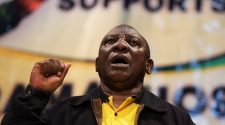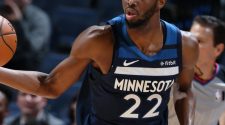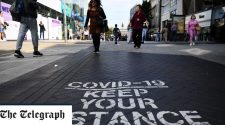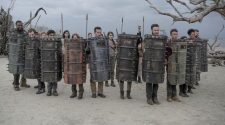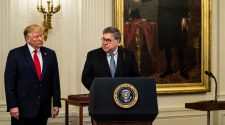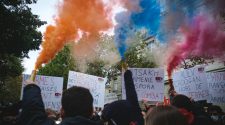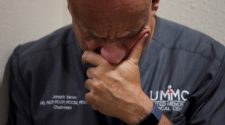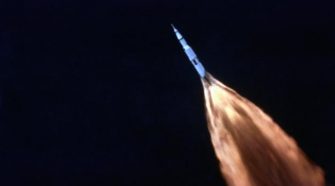For the fourth time in three years, an NFL team hoping to make a leap to the next level has traded away two first-round picks to acquire a young superstar. In some ways, the Seahawks’ unexpected decision to trade three picks and Bradley McDougald to the Jets for All-Pro safety Jamal Adams is the riskiest of the four.
Adams is a great player, but by making this trade, the Seahawks are saying that they think Adams makes them Super Bowl contenders. Is that likely to be true? Here’s my grade and analysis for the deal:
Jump to the grades for the trade

Is it worth going all-in for a safety?
The first thing that stands out in comparing this trade to the three others of its kind is the position. When teams make these trades, it’s almost always for a player at a critical position. The Bears kicked off this trend by trading two first-rounders for edge rusher Khalil Mack. Bill O’Brien followed with a similar move in acquiring left tackle Laremy Tunsil and wide receiver Kenny Stills for the Texans. The Rams finished up by sending two first-rounders to the Jaguars for star cornerback Jalen Ramsey.
2 Related
All of those deals have one thing in common: Those players line up at places in which the NFL pays a premium for transcendent players. If you look at the 10 largest multiyear deals at each position to get a sense of how the NFL values those different positions, quarterbacks are unsurprisingly in a tier of their own. The second tier consists of pass-rushers and wide receivers, where the top 10 deals are commanding about $18 million or more across the first three years of their extensions.
There’s a drop-off from there to the third tier, which consists of tackles and cornerbacks, where the top 10 players are at about $15 million per season. After that, it’s only once you get to the fourth tier that you see off-ball linebackers, running backs, safeties and interior linemen. The top 10 safety deals average a little over $12 million per season, and that’s after a robust free-agent period in 2019. The safety market was dead two years ago; teams were spoiled by choice, and talented players such as Tyrann Mathieu and Kenny Vaccaro were forced to settle for one-year deals.
While I had my questions about each of those trades, in each case, the acquiring team was getting a young superstar at what the league deems to be a critical position. In this case, the Seahawks are making the same sort of move for a player the league typically doesn’t value at that same level. In that sense, they’re taking a bigger risk than those other teams did in going after Mack, Tunsil and Ramsey.
Under coach Pete Carroll and general manager John Schneider, Seattle hasn’t cared much about what the rest of the league thinks when it comes to positional value or efficiency. Those moves have had mixed results. The Seahawks have used first-round picks and free-agent dollars on physical linemen with pass-protection issues, such as James Carpenter, Germain Ifedi and Luke Joeckel, and spent their 2018 first-rounder on running back Rashaad Penny. Their espoused organizational philosophy about running the football is at odds with analytics.
![]()
![]()
New York Jets get: 2021 and 2022 first-round picks, 2021 third-round pick, S Bradley McDougald
Seattle Seahawks get: S Jamal Adams, 2022 fourth-round pick
Jets grade: B+
Seahawks grade: C+
On the other hand, Carroll and Schneider used the 14th overall pick in their first draft on a safety out of Texas by the name of Earl Thomas, and that move worked out fine. Two years later, they went against the grain and used their third-round pick on Russell Wilson, who was supposedly too short to be an NFL quarterback. They landed two likely Hall of Famers by taking shots where other teams feared to tread. Since Wilson arrived in town, the only team to win more games than the Seahawks is the Patriots. These guys might deserve some benefit of the doubt at this point, no?
In a vacuum, trading this sort of haul for a safety — even one as talented as Adams — is a bad idea. Let’s see if we can play devil’s advocate and get a sense of why the Seahawks might be correct to think otherwise.
Argument No. 1: Could Adams make an impact like Tyrann Mathieu?
If the Seahawks want evidence that a safety can help push a team over the top and propel them from a perennial playoff contender into a Super Bowl winner, they don’t have to look far. The Chiefs’ offense was absolutely devastating after Patrick Mahomes took over as the starter in 2018, but a defense ranked 26th in DVOA couldn’t hold up its end of the bargain.
Specifically, you could argue that Kansas City didn’t make it to the Super Bowl that season because it was tormented by Rob Gronkowski. In its 43-40 regular-season loss to the Patriots, Gronkowski had two huge catches in the fourth quarter, with the biggest coming against third-string defensive back Josh Shaw. In the AFC Championship Game, Gronk had two more key catches in the fourth quarter while going past Eric Berry, who was injured for most of the year and limited upon his return. Both Shaw and Berry were out of the league in 2019.
The Chiefs didn’t have to worry about Gronkowski in 2019, but in replacing Berry with Mathieu, they wanted a safety who could serve as a team leader and playmaker. They jumped from 26th to 14th in defensive DVOA, and Mathieu’s instincts and versatility were a key reason why. According to the Football Outsiders Almanac 2020, Mathieu ranked in the top 15 in both target rate and average yards per attempt allowed. Kansas City’s run defense wasn’t effective, but he also made life easier for rookie safety Juan Thornhill, who had an impressive campaign before tearing his ACL. Mathieu’s three-year, $42 million deal was one of the most expensive deals in the league for a safety, but nobody in the organization regrets that move right now.
The healthy version of Mathieu is the closest comparable I can think of for Adams, although Adams is more productive as a blitzer and Mathieu is better in coverage. If you don’t believe me, you can ask Mathieu himself, who called Adams “a bigger version of me” before the Super Bowl. The Seahawks obviously hope they can get the same sort of boost from their own former LSU star after trading for Adams.
Argument No. 2: Maybe Pete Carroll is that good of a coach?
If there’s any coach in the league who knows how to get the most out of pieces in the secondary, it’s Carroll. A longtime defensive backs coach and defensive coordinator before moving into a head-coaching role, Carroll’s work with the Seahawks alone has been remarkable. While Thomas was a college star who profiled as an impact pro, the Legion of Boom wasn’t filled with players perceived to be blue-chippers. Richard Sherman and Kam Chancellor were fifth-round picks. Byron Maxwell was a sixth-round pick. Brandon Browner went undrafted and spent four years playing for the Calgary Stampeders before signing with Seattle. All of those guys vastly outplayed their pedigree after landing with the Seahawks.
While it hasn’t been to the same degree, Carroll has also built a new crop of talent after breaking up his legendary secondary. Shaquill Griffin, a third-rounder in 2017, is already one of the league’s best cornerbacks. Justin Coleman impressed as a slot corner before leaving for a big deal with the Lions. At safety, Carroll bought low on a pair of veterans in McDougald and Quandre Diggs and turned them into one of the better safety pairings in football when both were healthy last season. If Carroll can make Adams that much better, it would be a scary proposition for Seattle’s opponents.

To get a sense of where Adams fits in, though, you have to take a step back and think about how the Seahawks have changed. During the Legion of Boom era, they were primarily a Cover 3 team. While they had a lockdown corner on one side of the field in Sherman and a devastating hitter at the second level in Chancellor, the reason Seattle was able to run so much Cover 3 and run it effectively was Thomas. Carroll asks the deep centerfield safety in his defense to be able to defend against both the post and seam routes. When it came to taking away the deep middle of the field, nobody was better than Thomas.
Thomas’s last healthy-ish season in Seattle was 2017, when he played 84% of the defensive snaps. Unsurprisingly, he was used a lot as a single-high safety. According to ESPN’s automated coverage analysis, the Seahawks played single-safety coverages 81.9% of the time, which was the highest rate in the league. To flip this, they used split-safety coverages like Cover 2 or Cover 4 just 18.1% of the time.
Without Thomas, things have changed. They inserted Diggs into that role after he was acquired from the Lions last season, but even with that in mind, Seattle used two deep safeties 38.5% of the time last season, which was right about league average and more than double their rate from two years prior. Diggs was an underrated player and a canny trade for the Seahawks, but the reality is that there just aren’t many people on the planet who can do what Thomas did snap after snap at the same level.
Adams is an incredible player, but he’s also not that guy. He is a capable free safety when asked to play that role, but Seattle isn’t acquiring him to be the new Thomas. Last season, under Gregg Williams, the Jets typically lined up Marcus Maye as a (very) deep safety and used Adams around the box. Courtesy of NFL Next Gen Stats, take a look at Adams’ heat map, which shows where he was lined up before each of his snaps in 2019. Red spots mean Adams lined up in those areas more frequently:
Jamal Adams’s heat map from 2019 pic.twitter.com/LREY0z3XFo
— Bill Barnwell (@billbarnwell) July 25, 2020
Compare that to Chancellor’s heat map from 2016:
Kam Chancellor’s heat map from 2016 pic.twitter.com/mrErvUqfdg
— Bill Barnwell (@billbarnwell) July 26, 2020
Nominally, it seems likely that the Seahawks will line up Adams in a similar way to how they used Chancellor. It’s the best place for Adams, who is an excellent hitter, a strong run defender and a devastating blitzer off the edge. According to Football Outsiders data, only two safeties made run stops more frequently than Adams did a year ago. Chancellor was stretched in coverage and was often targeted by teams when they wanted to try to go after somebody in the Legion of Boom at its peak, but Adams is better in coverage than Chancellor was.
“Kam Chancellor but better in coverage” sounds like a really talented player, but it’s not worth two first-round picks and some more. It’s just not that difficult to find useful box safeties, especially when you have a coach as talented as Carroll to help mold players at the position. McDougald, who is going the other way in this deal, is a classic example. The former Bucs safety isn’t as good as Chancellor or Adams, but he has been an above-average player at the position over the past three years while making just under $3.5 million per season. The difference between McDougald at $3.5 million per year and Adams on what is likely to become a much larger salary isn’t worth it to me.
On the other hand, though, what if we’re underestimating Adams’ role?
Argument No. 3: What if Adams isn’t really a safety?
Given that the Seahawks aren’t running the same scheme they ran during the Chancellor days and probably wouldn’t pay this much for a Chancellor replacement, we have to believe that they see Adams in a different sort of role and doing different sorts of things. “Positionless football” has become a buzzy phrase in recent years, but it’s easy to see how teams are benefiting from players with diverse skill sets. It’s easier to see that shift on the offensive side of the ball. The reigning league MVP is a quarterback who ran the ball 176 times last season. The Seahawks’ fiercest rivals have a wide receiver who lines up in the backfield in Deebo Samuel and a fullback who can split out and catch passes in Kyle Juszczyk. They also have a guy who does everything in George Kittle. The Cardinals have a devastating run-pass threat in Kyler Murray. The Seahawks had to deal with Todd Gurley at his peak and go up against a coach who loves play-action and exploiting box players in the passing game in Sean McVay.
Create or join a league today >>
Cheat Sheet Central >>
Adams, like Mathieu, is an example of how that positionless revolution also applies to defense. As ESPN’s Mina Kimes noted on Twitter, Adams was credited as a linebacker or a defensive lineman more frequently than he was a safety before the snap since the start of his career. Adams is better in coverage than any linebacker and better against the run than just about any safety. He has the athleticism and frame to compete with guys like Kittle and Murray, and there aren’t many players in the league who can do that.
The Seahawks already have one elite second-level player in Bobby Wagner. With all due respect to K.J. Wright, Adams gives them a second player in that space. Young players such as Deone Bucannon and Johnathan Cyprien have come into the league with the hopes of serving as that prototypical hybrid defender, but they weren’t able to deliver on that promise. Adams has a better shot of being that sort of player.
Adams should also be able to make an impact in a place most safeties typically don’t: as a pass-rusher. Since entering the league, he has 12 sacks and 23 knockdowns, the most of any defensive back over that time frame. He racked up 6.5 sacks and 13 hits last season, which is something defensive backs just don’t do. You might remember him ripping the ball out of Daniel Jones’ hands last season before taking the ball to the house for a touchdown. As a designated blitzer or coming late in plays as a spy or a “green dog” rusher, Adams is an impactful pass-rusher.
For a team that didn’t have a player top more than four sacks last season and which hasn’t replaced Jadeveon Clowney, getting that sort of pass production out of a defensive back would be remarkable. I would argue it’s tough to count on it happening again. Since the league started officially tracking sacks in 1982, just two defensive backs have racked up five sacks in a season more than once. Those two players were Carnell Lake and Adrian Wilson, who each did it twice across 24 combined seasons. Adams is still going to be better as a rusher than the vast majority of defensive backs, but unless he truly becomes a full-time linebacker or edge rusher, the Seahawks probably can’t count on him for more than three sacks most years.
I can see the argument that Adams is more than just Chancellor or a traditional strong safety. When you look at his performance, though, Adams stands out as a special run defender and a great pass-rusher for his position. I’m not sure the pass-rushing production will stick, and while he could continue to be great against the run, the Seahawks are likely focused too much on the running game as an organization. In modern football, teams don’t win by running and stopping the run. They win by throwing the ball and stopping the pass. The best example of that model, of course, would be last season’s Chiefs.
Can the Seahawks make the cost work?
Let’s assume that Adams is an absolutely transcendent talent and the best safety in football. Can the Seahawks make this trade work? When you get into the finances, it becomes extremely difficult to justify giving up this sort of haul for one player unless he’s a quarterback. It’s a story I’ve had to bring up with each of these players, and while I went into detail with Mack’s contract, Justis Mosqueda did a better job of summing it up in one tweet:
“How do you measure overpaying?”
“If you pay him market value then whatever you traded is how much you overpaid.”
“Wow that sounds like one team messed up to a very high degree and I do not like that perspective. I’ll just say draft picks can be anything.”
— Justis Mosqueda (Day 137) (@JuMosq) July 25, 2020
I’m still going to try anyway. When they’ve made these trades, the acquiring team has been forced to hand out massive contract extensions as part of the process. Mack signed a six-year, $141 million deal with the Bears; his $23.5 million average salary topped the previous record for an edge rusher by more than $4 million. Tunsil played out his first season with the Texans and then inked a three-year, $66 million extension. At $22 million per year, it’s $4 million more than the paper extension signed by Lane Johnson with the Eagles, which doesn’t even kick in until 2024.
Adams still has a year left on his rookie deal and a fifth-year option, but an extension making him the NFL’s highest-paid safety is inevitable. The Seahawks tend to prefer shorter contracts and waiting until there’s one year left before negotiating an extension, but if they didn’t get an extension done with him as part of this trade, it’ll only cost them more and make things more difficult for them down the line.
If he were to get that same $4 million annual trade premium that Mack and Tunsil received, Adams would be looking at a four-year, $74.4 million extension. I don’t think that’s a realistic number, but at the very least, he will become the first safety in the league to make $15 million per year on a new deal. The Seahawks have nearly $17 million in cap room, so getting an extension done shouldn’t be a problem. The short-term cap decrease to $175 million in 2021 also shouldn’t be an issue when they can be flexible in how they structure the deal.
Let’s say Adams signs a four-year, $64 million extension. That would be a record extension for a safety in terms of average salary, but he has earned that sort of deal. With two years to go before free agency, there would be no issue with the Seahawks handing him that deal in terms of expected production or cap concerns. Every contract has risks involved, but that would be a risk worth taking.
The issue is that Adams really costs a lot more. For one, the Seahawks dealt away McDougald, whose one-year, $3.6 million deal was an asset. My guess is that if McDougald had hit the market in March and been locked into a one-year contract, he would have received something in the $6 million range. Seattle is giving up $2.5 million of surplus value by making this trade, so you have to throw that on the Adams tab.
More significantly, it is giving up two first-round picks and swapping a 2021 third-round pick for a 2022 fourth-rounder. When you trade away those picks, you’re incurring an opportunity cost and forgoing an opportunity to acquire a player for less than his market value. The Seahawks haven’t done much in the first round in recent years, but they used their first-round pick last year to trade down and eventually draft DK Metcalf in Round 2. At a position where someone like Sammy Watkins can take down a three-year, $48 million deal in free agency, Metcalf will make about $3.8 million over the next three years of his deal in total. Draft picks aren’t guaranteed, but even the possibility of landing someone like Metcalf at that rate some of the time makes them incredibly valuable.
We don’t know where those picks will land, and while the Seahawks would like to believe that they’ll land in the mid-20s after years of sustained success, remember that the Texans were picking in the back half of the first round for most of the past decade when they traded two first-rounders to the Browns for Deshaun Watson and then collapsed the following year. They ended up sending the Nos. 4 and 25 picks to the Browns for the 12th selection. While the Texans are obviously happy with Watson, I don’t think they anticipated one of their first-rounders would be a top-five pick.
Different organizations have different models for what each pick is worth in terms of surplus value. In recent years, we’ve seen teams basically buy picks by giving away cap space or absorbing contracts. The Browns essentially paid about $16 million to acquire a second-round pick from the Texans as part of the Brock Osweiler trade, which they used on Nick Chubb. The Dolphins ate $5 million of Ryan Tannehill’s contract to net a fourth-rounder in their trade with the Titans, a move that worked out well for Tennessee.
If I’m being conservative and assuming that there’s a modest market for draft picks and the Seahawks are giving away two first-round picks 26th or later, my guess is that the two first-round picks are worth about $40 million in surplus value. Swapping the third-round pick for a fourth-round pick one year later is maybe $2 million or so given that teams typically pay a premium in draft capital to get a pick a year earlier, although the Jets are likely to be toward the top of the round.
Factor in the cost of acquiring Adams and that four-year, $64 million extension suddenly becomes a four-year, $108.5 million contract. Instead of paying Adams $16 million per year, now he’s cost the Seahawks more than $27 million per season, which is more than anybody in the league who isn’t a quarterback. If their picks end up being juicier than they were expecting, that price goes up. Adams has to be the best non-quarterback in the league to make the math work.
Seattle will never know who it would have actually drafted in making this trade, but the price usually isn’t pretty. The Browns got Denzel Ward and Jabrill Peppers out of the Watson trade, using the latter to help acquire Odell Beckham Jr. The Raiders got Josh Jacobs and Damon Arnette. Those returns aren’t enormous, but if we go back further to deals where a team gave up two first-rounders for a veteran, the Broncos turned Jay Cutler into Demaryius Thomas and Eric Decker. The Jets used a first-rounder from the Keyshawn Johnson trade to draft John Abraham. The Colts dealt away Jeff George and eventually drafted Marvin Harrison. The Seahawks themselves traded away Joey Galloway and used one of the picks on future MVP Shaun Alexander; in a prior deal, they shipped off Fredd Young for two first-rounders and then used one of those picks to move up and draft franchise icon Cortez Kennedy.

Jeremy Fowler polled a panel of more than 50 coaches, execs, scouts and players to come up with top 10 rankings for 2020:
• QB | RB | TE | WR | OT
• Interior OL | Edge
• DT | LB
• CB | Safety
More NFL coverage »
We can look at those recent trades and see where they haven’t worked out ideally for the acquiring teams. The Bears got a dominant season out of Mack in 2018 and won the NFC North, but their offense couldn’t get the job done in their playoff loss to the Eagles. With Mitchell Trubisky struggling, the Bears didn’t have the cap space or the draft capital to address quarterback this offseason, forcing them to trade for a Band-Aid (and absorb more money) in Nick Foles.
Tunsil led the league in penalties for a Texans team that still has holes across the roster. They won a home playoff game, but they were very clearly not on the Chiefs’ level in a brutal divisional-round loss and don’t have the draft picks to address their weaknesses in the years to come. The Rams essentially swapped Ramsey for Marcus Peters and paid two first-round picks to do so, but Peters was the much better player after his arrival in Baltimore. The Rams still haven’t paid Ramsey and won’t be able to address their flailing offensive line anytime soon.
Is Seattle really Super Bowl-bound?
For this trade to work for the Seahawks, they have to feel as though they’re capable of doing what the Chiefs did and winning a Super Bowl by adding a star safety. It’s not out of the question. DVOA thinks the Seahawks were the eighth-best team in football in 2019, with their offense ranking fifth and their defense 18th. They were a half-inch away from winning the NFC West. ESPN’s Football Power Index gave them a 3% chance of winning the Super Bowl in 2020 before the Adams trade, which was the 10th-highest for any team in football. Adams could be a dramatic difference-maker.
I don’t think the Seahawks are as close as they might think. They went 11-5 last season, but they outscored opposing teams by only seven points. That narrow loss to the 49ers in Week 17 lingers in the mind, but Seattle was fortunate in close games. It went 9-2 in games decided by seven points or fewer, including two games in which its opponent missed a winning field goal attempt in the final minute or overtime. I like Russell Wilson’s chances in close games, but even the incredible Seahawks quarterback was 29-29-1 in those same seven-point games before 2019.
While there are exceptions, the vast majority of teams that have that sort of performance in close games decline the following season. The Seahawks were healthier than league average on both sides of the ball, have rebuilt their offensive line on the fly without any time to practice, and won’t have the sort of deafening noise we associate with their fans at home this season, reducing their home-field advantage. There’s much more evidence suggesting they are likely to decline in 2020 than there is implying they’ll improve and take a step forward.
Adams obviously improves the Seahawks at safety, which helps, but they also downgraded on the edge by replacing Clowney with Bruce Irvin and Benson Mayowa. L.J. Collier, a first-round pick last year, deserves more time, but he was a total non-factor as a rookie. Adams will help the pass rush, but Seattle has less edge-rushing talent on paper than it did last season, when it ranked 30th in both sack rate and pressure rate. I don’t think the Seahawks are in great position to win a Super Bowl, even after adding Adams.
It’s too late now since they wouldn’t be able to sign him to an extension, but I wonder if the Seahawks would have been better off trying to send a first-round pick to the Jaguars for Yannick Ngakoue. They could still re-sign Clowney to a one-year deal and try to maximize their chances of winning a Super Bowl this season, but that doesn’t really change the calculus of the Adams deal.
The idea that they need to make this deal to maximize their championship window while Wilson is at his peak makes sense to me, but it doesn’t really fit their year-to-year logic. If that’s the case, why did they trade Frank Clark to the Chiefs for a first-round pick last season? Why let Sherman and Thomas leave in recent years? Why haven’t they done more to address the pass rush before today? Most important, why not let Wilson take the reins of the offense and throw the ball more frequently before the fourth quarter?
If anything, this feels like it’s trying to win a Super Bowl while the 68-year-old Carroll is still the coach and around to get the most out of his defensive backs. Adding a young star is never a terrible idea, and I think Adams is going to be a key contributor to the Seahawks for a long time. At this price tag and given their likely output in 2020, though, it’s difficult to make this look favorable for Seattle.
Why the Jets made this deal
I prefer the Jets’ side of this deal, although it’s also a depressing side to take for fans of that team. This is an organization that has done a horrific job of drafting and developing young talent over the past decade. Adams was one of the few exceptions to that rule and one of the few bright spots in a frustrating, often-bizarre 2019 season. Getting rid of Adams and continuing on yet another rebuild in search of a functional core isn’t going to feel very good in the short term.
Realistically, I’m not sure they had much of a choice. In the past week, Adams had criticized ownership and fired a shot at coach Adam Gase in the media. I don’t think he was wrong about either issue, and he was much more important to the Jets’ chances of winning over the next few years than Gase will be, but that’s the sort of thing you do when you’re ready to get traded. Given the on-again, off-again relationship between these two sides, a clean break was probably best for both.

• Early rankings: Kiper » | McShay »
• Meet the QBs » | Lawrence v. Burrow »
• Predicting risers, sleepers, more »
• Projecting the top 10 picks for 2021 »
More NFL draft coverage »
The sad truth is that the Jets probably weren’t going to be contending in the recent future, with or without Adams. This is an organization that is likely to have two players on its active roster in 2020 who were drafted by the organization before 2018 in Maye and Brian Winters. The Bills have undergone a similar churn by drafting well, hiring the right coach and investing in bulk through free agency. The Jets have shopped at the top of the market and gotten pennies on the dollar for their investments in players such as Trumaine Johnson, C.J. Mosley and Le’Veon Bell.
There is no infrastructure in place for the Jets to succeed, and there has not been for nearly a decade. They have one winning season since 2010, and that was in 2015, when they signed a bunch of free agents and got a one-year boost. It wasn’t enough to make the playoffs, let alone go anywhere once they got there. Getting two extra first-round picks and building through the draft is still the best way to develop a long-term winner, and while it cost them their best player, it was the right thing for this team to do.

